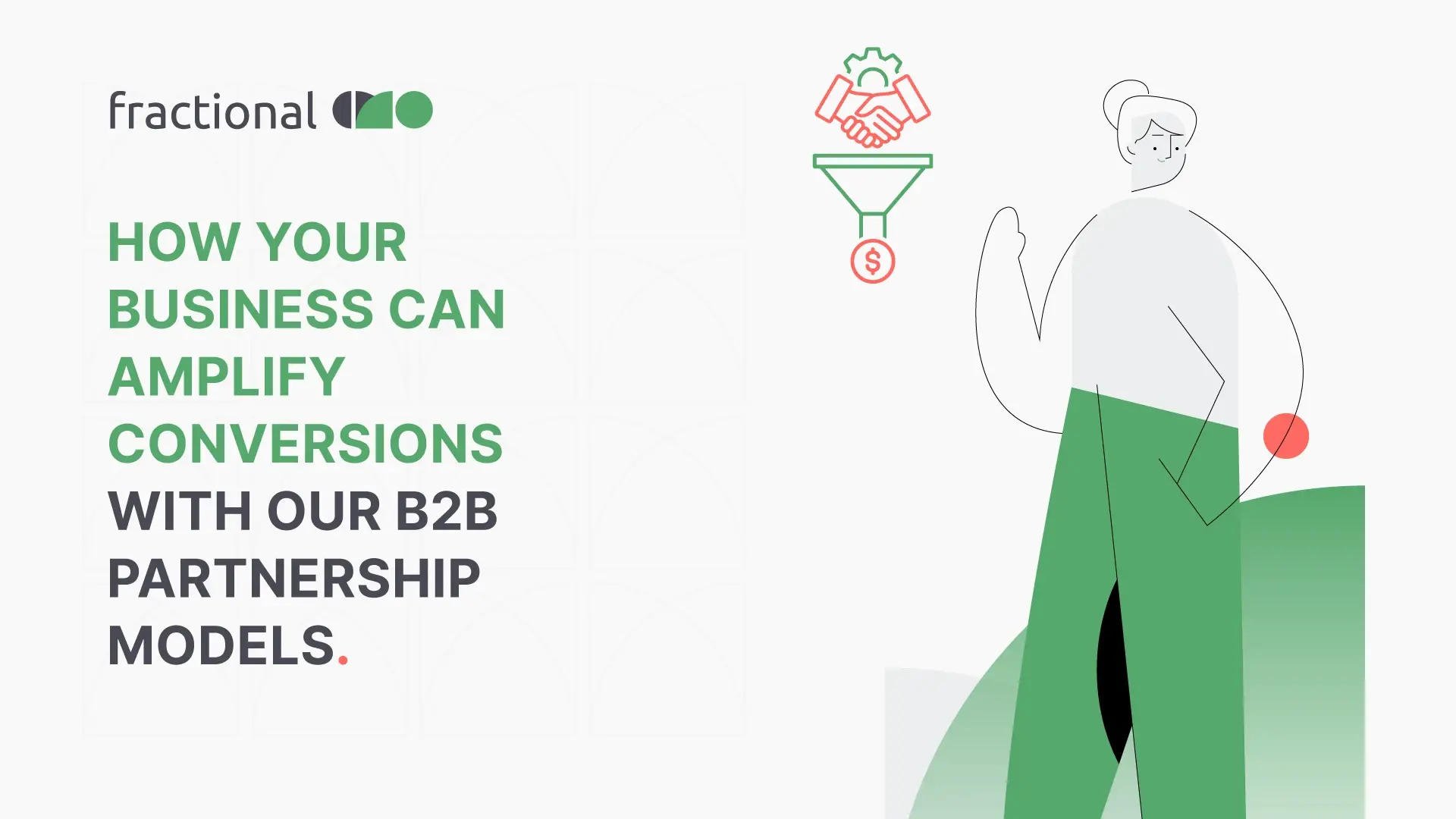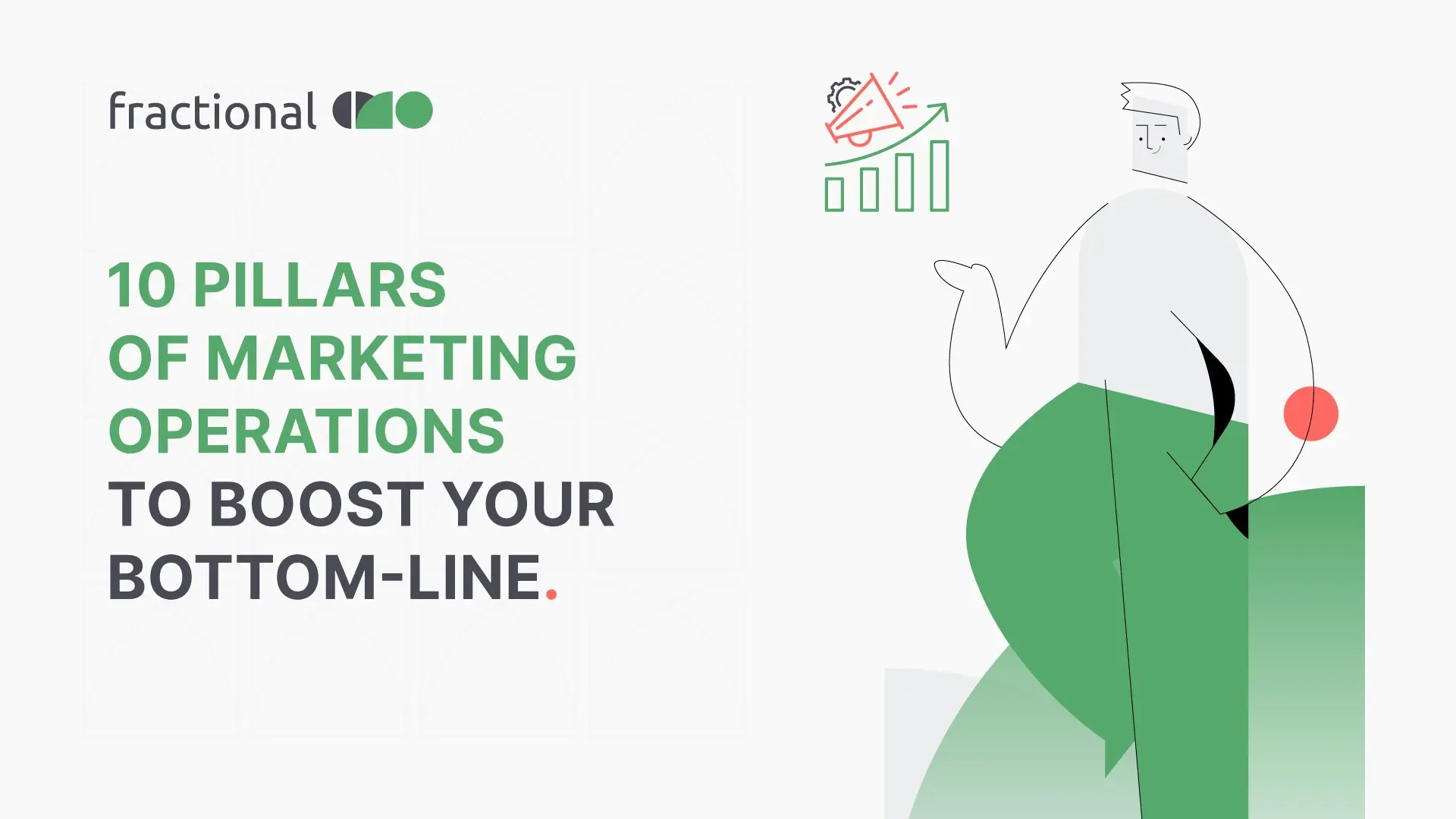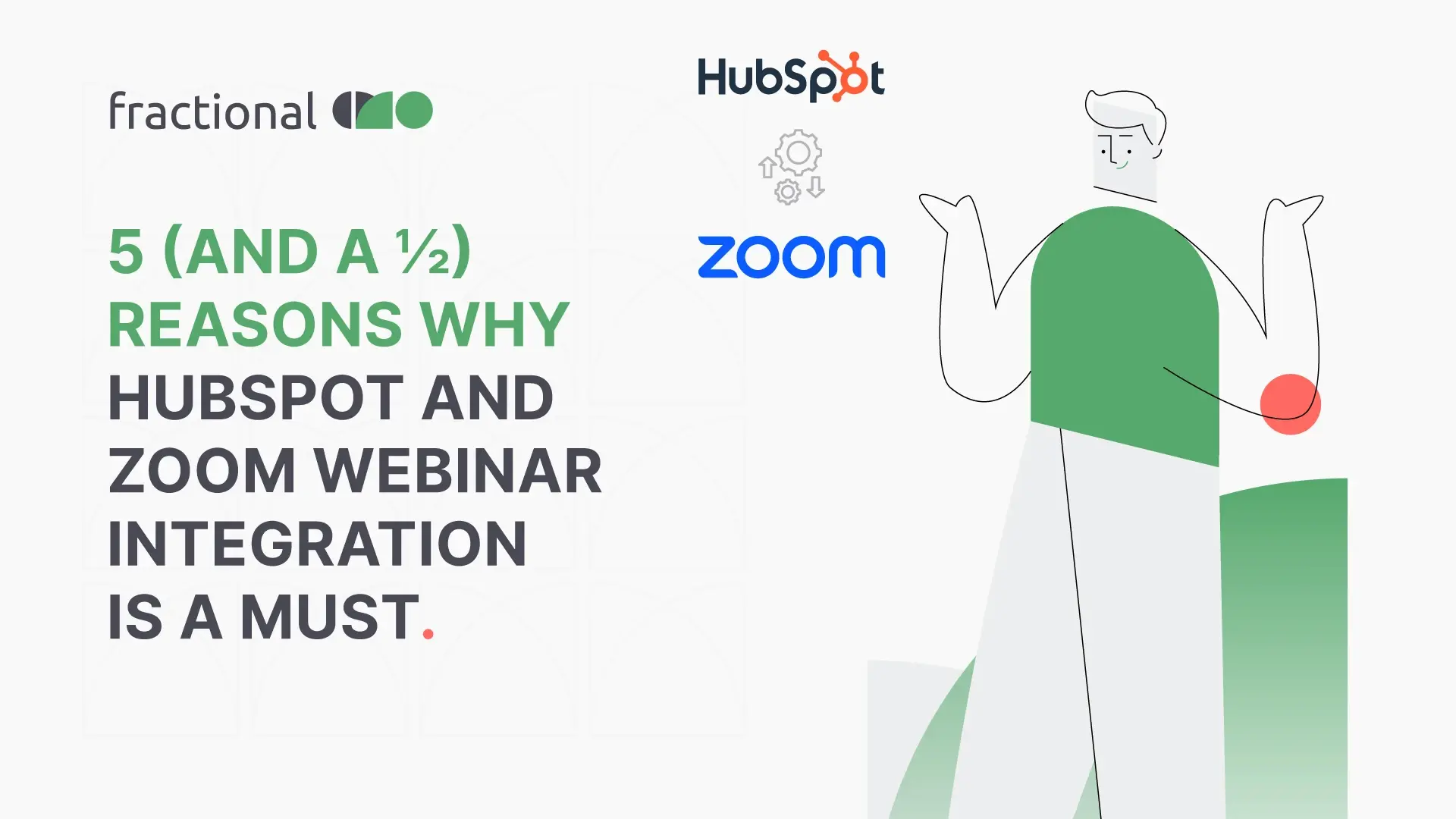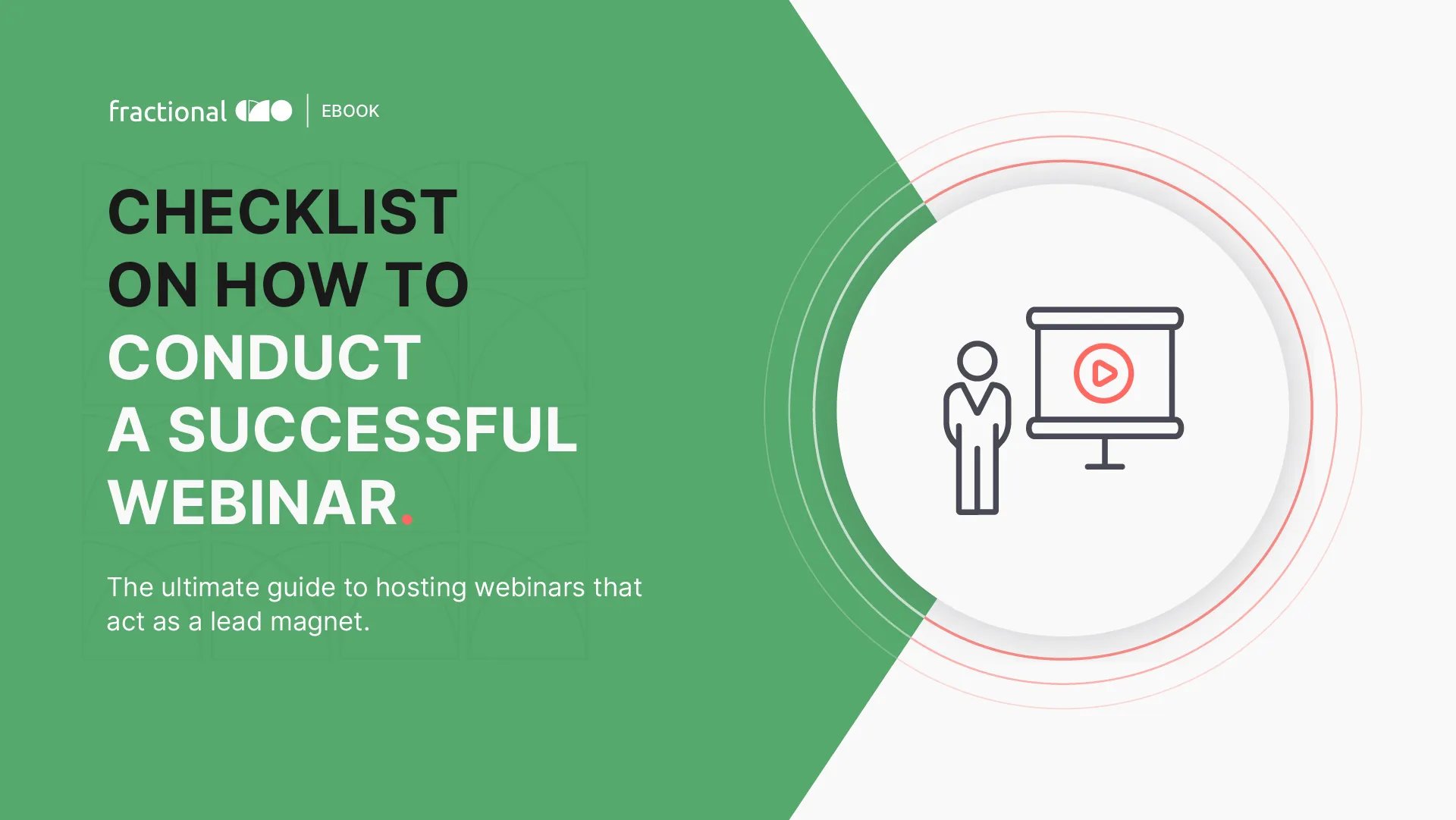Top Tools & Techniques You Should Employ for a Healthy MarTech Stack

What is a MarTech stack?
A MarTech stack is a set of multiple marketing tools that work together to complement each element of a marketing campaign.
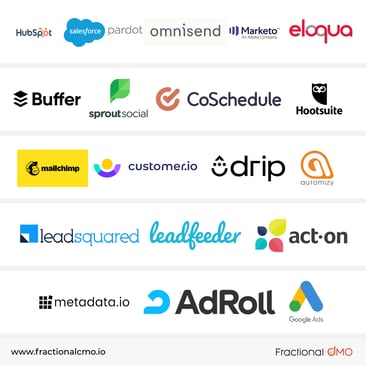 Source: Fractional CMO
Source: Fractional CMO
Read this resource for more information: What is MarTech? Why is it the future of digital marketing?
Some top Marketing Automation tools
The right mix of marketing automation tools (Know the 10 best marketing automation tools for 2021.) can either make your life easier or give you a headache. Start with the essentials and add on to your tech stack as you go. All of the platforms listed below should work in unison to support your marketing automation strategy (Read the 10 tips to develop a successful marketing automation strategy) as well as your overall marketing strategy.
Content Management System
A Content Management System is a website where you can create, edit, collaborate, and publish content. Wix, WordPress, and Squarespace are all examples of popular content management systems. Every CMS is different; some tailor to blogs, education, or retail. Find a content style that best fits your niche and start posting.
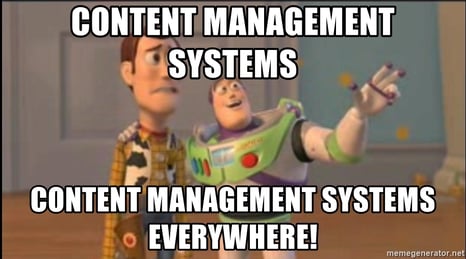 Source: Meme Generator
Source: Meme Generator
- WordPress - Is flexible; create either a blog or a website. You also have the option of using Wordpress’s free domain or pay for your unique domain. Because WordPress has so many customizable options, there’s a bit of a learning curve.
- Squarespace - Is also a flexible option. Use this platform to build a blog, showcase your portfolio, create an online store, upload tutorials, etc. You can even hire a SquareSpace expert directly from the page to help you build your dream website. It is a paid website, but you can take advantage of their free trial.
Customer Relationship Management System
Manage and keep track of customer interactions with a CRM. This way, sales, and marketing can be on the same page regarding a prospect’s buyer’s journey. A CRM serves as a helpful tool for teams to know when their audience is more receptive to targeted messages and when they’re ready to buy.
Source: YouTube
When choosing a CRM, it’s good to look for one that supports importing and exporting data between platforms to avoid manually inputting large amounts of data.
For example, say you want to reach out to prospects on LinkedIn. A good extension to have would be LinkedIn Hub which downloads Ideal Customer Persona information from LinkedIn, which you can then store in your CRM to target later.
Email Marketing Software
Whether you’re reaching out through cold email or nurturing a prospect, efficient email marketing software is a vital tool in a marketer’s toolbox. It falls under the 10 tactics to solve your email marketing woes.
An Email Marketing Software helps you schedule, automate, and personalize emails through field enrichment. Mailchimp, Reply.io, and Constant Contact are all examples of popular email marketing software.
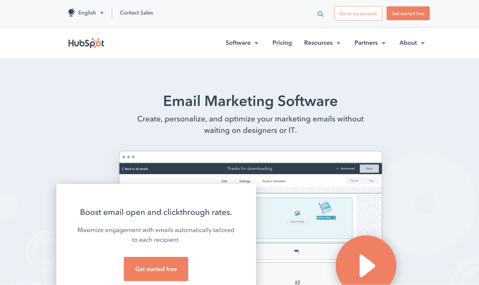 Source: HubSpot
Source: HubSpot
Before choosing an email marketing software think about the tone of voice and style you want your emails to convey.
- Do you plan to send a straightforward cold email?
- Do you plan to send a half-page newsletter with an eye-catching header?
- Better suited for newsletters - can incorporate design, has templates
- Better for cold email
- Better suited for newsletters - can incorporate design, has templates
Every piece of your MarTech stack should fit together to complement each step of your business strategy. Use your CRM to fill in Persona details in your email marketing software.
For example, say I’m emailing a prospect named Laura that lives in California. My email to Laura would look something like this:
Hi [First Name],
I see you’re from [State]. I’ve heard great things about [State] and have been wanting to visit for some time now…
Your email marketing software would then fill in each token with a designated keyword of your choosing. Thus, making each touchpoint with a customer feel like a close connection.
Website Analytics Software
Website Analytics Software helps you keep track of how well your website is doing. It reports on the number of people that visit your website, who they are, what they click on etc. So you know which elements of your website attract attention. If your website isn’t getting many hits, you should optimize accordingly. A/B Testing is great for this.
You create two different versions of the same website which are shown to users at random. See which version of your website ranks better based on the feedback the user gives so you can optimize later. Google Analytics is a free option to use.
 Source: Google Analytics
Source: Google Analytics
Social Media Management Software
Use social media management software to manage your content and track your campaign efforts like Hootsuite and Facebook.
Facebook Business Suite is a good option if you decide you could go without an extra tool. You can schedule posts, see how much engagement each post is receiving, and create and boost ads.
Hootsuite also allows you to manage multiple social media channels and provides you with insights on the performance of the posts. Hootsuite offers plans starting at $49/ mo. plus a 30 free trial period so it’s a good option for marketers on a looser budget.
Event Management Software
Use event management software to create, track and invite your audience to any upcoming events or webinars. If you’re planning to sell tickets to a workshop, Eventbrite is a free tool to get started. Zoom and Google Meet are also free platforms you can use to host your webinars.
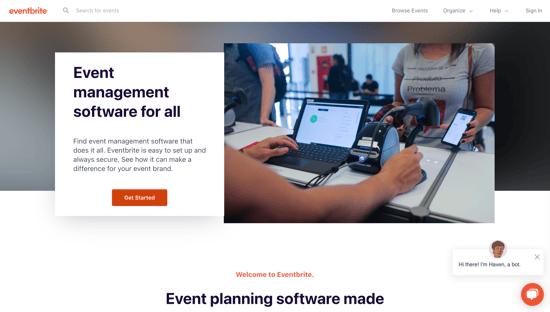 Source: Eventbrite
Source: Eventbrite
Graphic Design Software
Use graphic design software to create infographics, social media posts, newsletter headers, etc.
Adobe Cloud - Indesign, Illustrator, Photoshop
-
- Learning curve
- Expensive
- Unique & professional designs
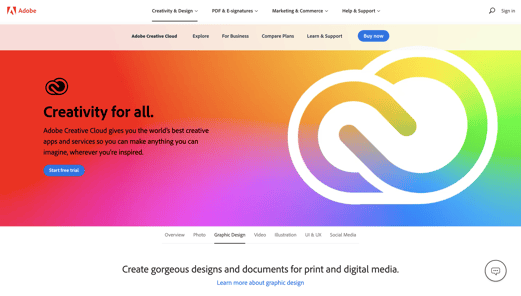 Source: Adobe
Source: Adobe
Canva
-
- A free or paid subscription
- Easy to use
- Templates
How do I pick the right marketing technology tools for my business?
The following are few things to keep in mind.
- What are your business goals?
-
- Do you want to measure your campaign performance?
- Increase your brand awareness.
- Engage with your audience?
- What is your budget?
In any case, have a set amount of money designated and stick to it to avoid overspending on the tech you might not need. You could also take advantage of a tool’s free trails while you are still experimenting with your toolbox.
Some to-do’s when building a marketing tech stack?
Do your own research
HubSpot suggests researching your strategy and creating a spreadsheet that contains your various tool options. Start with a list of five tools and narrow it down based on your budget, its features, and any cons.
Weave your tools together
Each tool should build on one another.
For example, if your goal is personalization, make your CRM, email automation software, and social media management software work together to build a unique experience for your prospect.
Import information about your prospect from your CRM into your email automation software. From there, create a sequence of different times to touch base and use your social media management software to direct message them. Consider adding a marketing software that holds all of your tools in one place like The Marketing Hub from HubSpot.
Create simple tutorials for each tool
HubSpot recommends creating and scheduling training sessions for each tool that you implement into your tech stack. Having software that not everyone on your team knows how to use will slow down and complicate your marketing strategy. Plan ahead by scheduling pieces of training for new hires and software updates to keep all team members on track.
Document everything
Create folders for all written work, tutorials, and data so all of your work stays organized making it easier to navigate when you’re looking for one specific document.
Analyze and Optimize get the most out of your tools before adding more on
Don’t get stuck paying for a subscription you rarely use.
Intercom recommends auditing your tools frequently to make sure they’re still working as you’d expect them to. Make sure to get the most out of your tools first before adding more on. It’s better to start with the basics and stack on more tools later than to have a bunch of tools your team isn’t familiar with.
How can a marketing tech stack benefit my business?
A marketing tech stack helps streamline your marketing process so you work faster and more efficiently. It should not substitute your marketing strategy but should complement it. A healthy marketing tech stack weaves together your tools for easy access to your data.
If you are facing challenges building a healthy MarTech stack, then you are at the right place!
We, at Fractional CMO, have an efficient MarTech stack that includes tools like HubSpot, Marketo, Pardot, Google Analytics, HootSuite, and more. Being a full-stack marketing automation agency, we can help build yours!
Interested? Reach out to us today!

